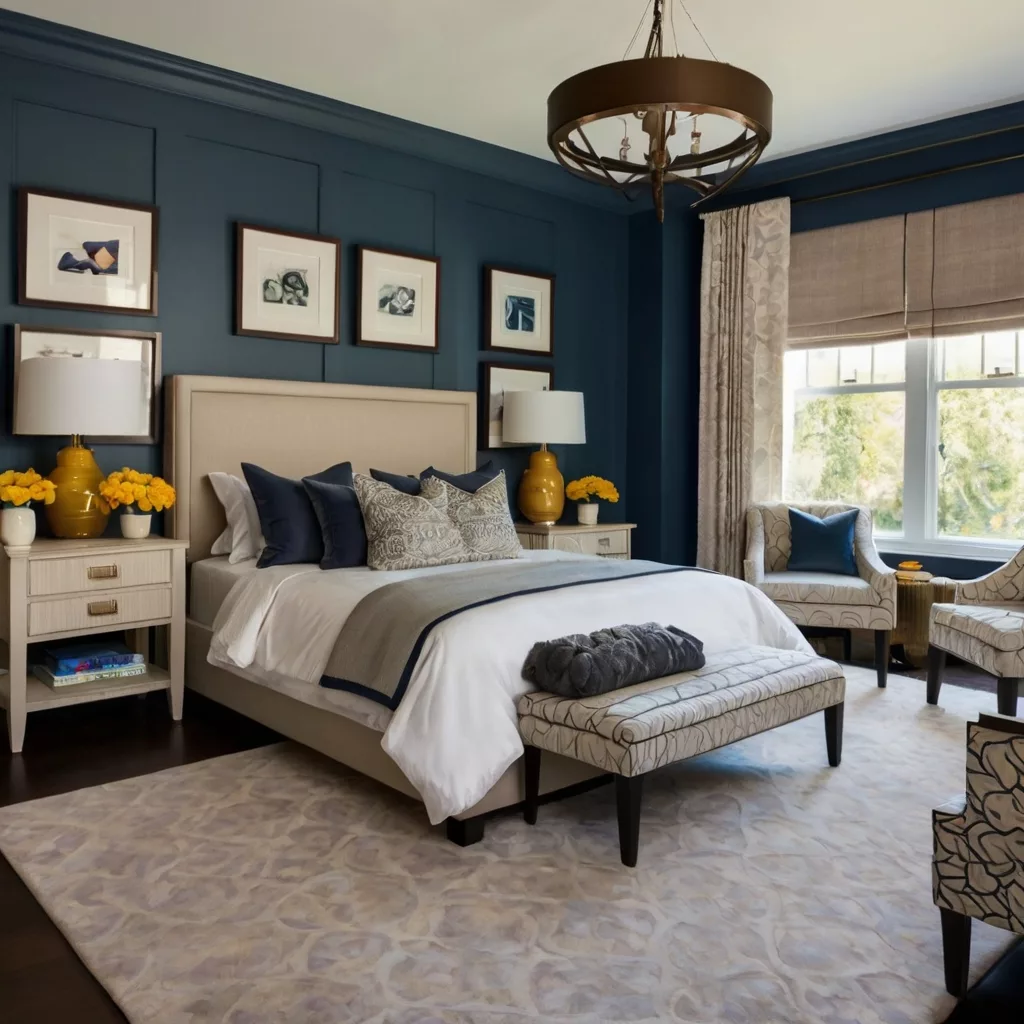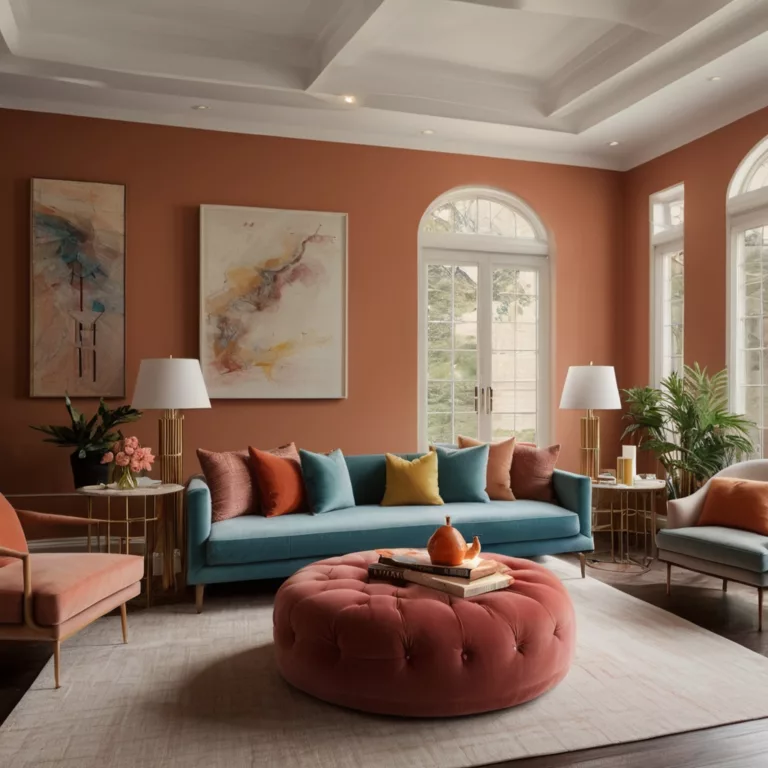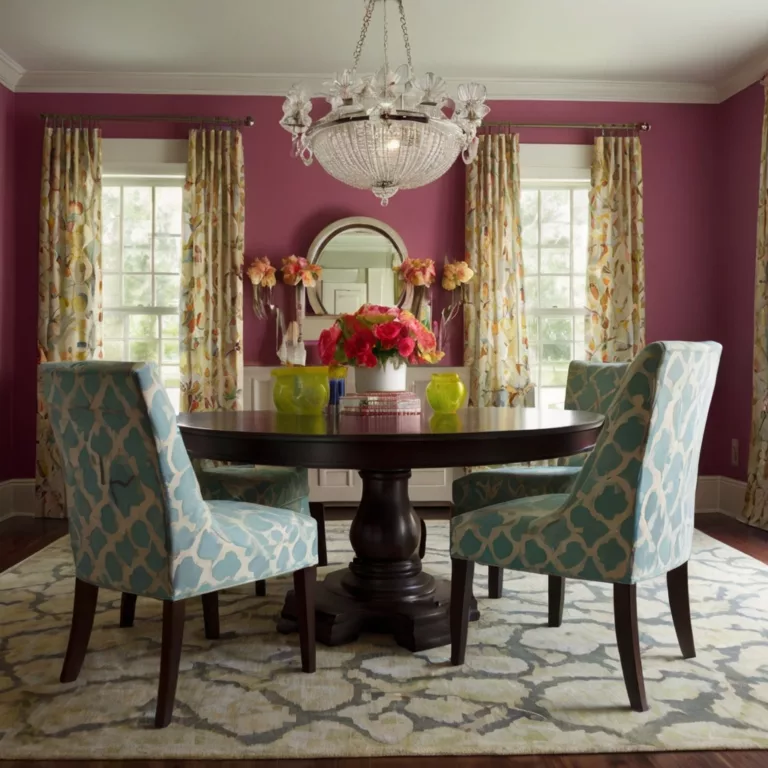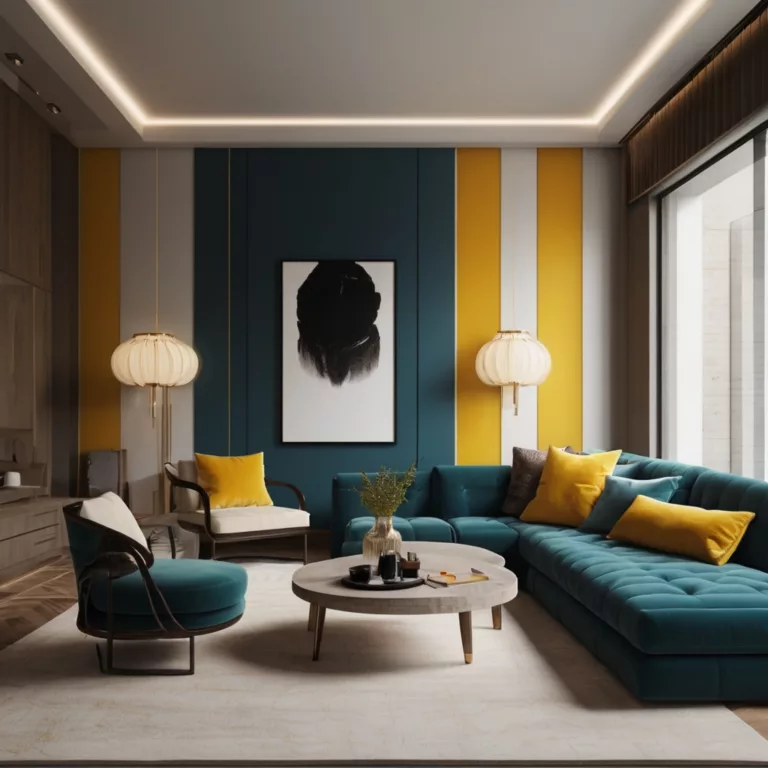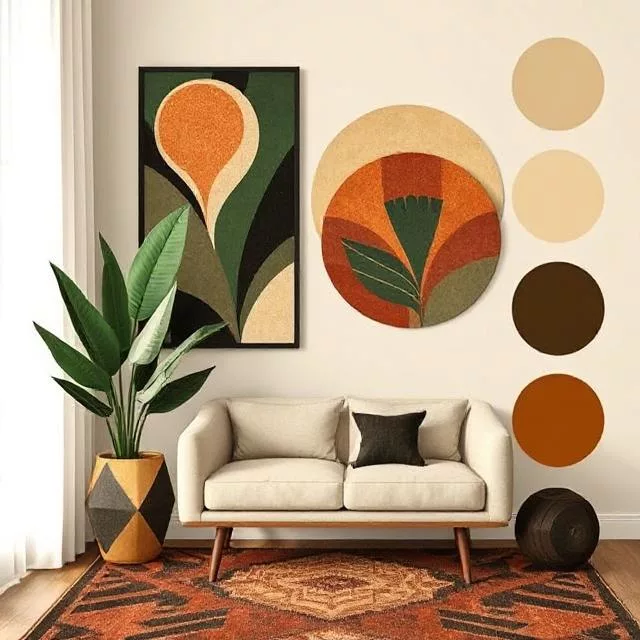Bedroom Colors for Better Sleep & Relaxation
Transform your sleep sanctuary with the perfect bedroom colors that promote rest and tranquility. This comprehensive guide explores color psychology, expert recommendations, and practical tips for creating a sleep-inducing space.
Introduction to Bedroom Colors for Sleep
Bedroom colors play a crucial role in creating an environment conducive to quality sleep and relaxation. As the space where we spend approximately one-third of our lives, the bedroom deserves thoughtful consideration of how colors affect our psychological and physiological responses. The right bedroom colors can transform your sleeping space into a true sanctuary that promotes rest, reduces stress, and supports your overall well-being.
In this comprehensive guide, we’ll explore everything you need to know about bedroom colors from understanding the science behind color psychology to specific color recommendations for different preferences and practical application strategies. Whether you’re planning a complete bedroom renovation or simply refreshing your space, these insights will help you make informed decisions about bedroom colors that enhance sleep quality and create a relaxing atmosphere.
The Science of Bedroom Colors and Sleep
The relationship between bedroom colors and sleep quality is rooted in both psychology and physiology. Understanding this connection can help you make more informed choices about your bedroom colors.
How Color Perception Affects Sleep
Our perception of bedroom colors involves more than just aesthetics:
- Photoreceptors: Our eyes contain specialized cells that respond to different colors and light wavelengths, which then transmit signals to the brain.
- Circadian Rhythm: Certain bedroom colors and light wavelengths can influence our internal clock, either promoting wakefulness or supporting natural sleep cycles.
- Emotional Response: Bedroom colors evoke subconscious emotional and physiological responses that can either heighten or reduce arousal levels.
Research has shown that exposure to certain bedroom colors before sleep can influence sleep quality, duration, and how quickly we fall asleep. The most effective bedroom colors for sleep tend to be those that create minimal visual stimulation and promote a sense of calm.
Color Temperature and Bedroom Colors
In considering bedroom colors, understanding color temperature is essential:
- Warm Bedroom Colors: Reds, oranges, and yellows are considered stimulating and energizing, potentially making them challenging choices for bedroom colors if sleep is the primary goal.
- Cool Bedroom Colors: Blues, greens, and some purples are generally considered calming and are often recommended as ideal bedroom colors for promoting rest.
- Neutral Bedroom Colors: Grays, browns, and whites can be either warm or cool depending on their undertones, making them versatile bedroom colors that can be adapted to different sleep needs.
The temperature of your bedroom colors should align with your specific sleep needs and preferences. For example, someone who struggles with feeling cold might benefit from warmer bedroom colors that create a psychological sense of warmth, while someone who tends to feel hot might prefer cooler bedroom colors.
Best Bedroom Colors for Sleep According to Experts
Sleep specialists, color psychologists, and interior designers generally agree on certain bedroom colors that promote better sleep. Let’s explore their recommendations:
Blue: The Ultimate Sleep-Promoting Bedroom Color
Consistently rated as the best color for sleep, blue bedroom colors offer numerous benefits:
- Blood Pressure Reduction: Studies suggest blue bedroom colors may lower blood pressure and heart rate.
- Calming Visual Signal: Blue sends a calming signal to the brain, making it an ideal choice among bedroom colors.
- Association with Nature: Blue bedroom colors evoke peaceful natural elements like clear skies and calm waters.
For optimal results, consider soft, muted blue bedroom colors rather than bright or electric blues. Dusty blue, pale aqua, and soft navy bedroom colors all support relaxation while offering different aesthetic options.
Green: Nature-Inspired Bedroom Colors
Green bedroom colors rank close behind blue in their sleep-enhancing properties:
- Stress Reduction: Research indicates green bedroom colors can reduce stress and anxiety.
- Balance: Green strikes a perfect balance in bedroom colors—neither too warm nor too cool.
- Natural Association: Green bedroom colors connect us with the restorative qualities of nature.
Sage, mint, and olive green bedroom colors are particularly effective for creating a sleep-friendly environment, each offering subtle variations in undertone and character.
Neutral Bedroom Colors: Versatile Sleep Solutions
Neutral bedroom colors provide excellent foundations for sleep-promoting spaces:
- Reduced Visual Stimulation: Neutral bedroom colors create minimal visual distraction.
- Flexibility: These bedroom colors work well with changing accessories and lighting conditions.
- Timelessness: Neutral bedroom colors resist dating or becoming visually tiresome.
Soft grays, warm taupes, and gentle creams make excellent neutral bedroom colors, especially when selected with appropriate undertones that complement your overall design.
Lavender: The Surprising Sleep Enhancer
Lavender stands out among purple bedroom colors for its unique sleep benefits:
- Scent Association: Beyond being a visual bedroom color, lavender is associated with the scent known to improve sleep quality.
- Gentle Stimulation: Unlike other purple bedroom colors that can be stimulating, lavender strikes the perfect balance.
- Stress Reduction: Studies show lavender bedroom colors may reduce blood pressure and stress hormones.
Pale, dusty lavender bedroom colors work best for sleep, avoiding the more stimulating aspects of brighter purples.
Pink: Beyond Gender Stereotypes in Bedroom Colors
Certain pink bedroom colors have demonstrated sleep benefits:
- “Baker-Miller Pink”: This specific pink shade has been studied for its calming properties among bedroom colors.
- Muscle Relaxation: Some research suggests pink bedroom colors may promote physical relaxation.
- Decreased Alertness: Soft pink bedroom colors may temporarily decrease alertness, facilitating sleep onset.
For sleep-friendly pink bedroom colors, choose dusty, muted tones rather than vibrant or saturated pinks.
Bedroom Colors to Avoid for Quality Sleep
Just as certain bedroom colors promote sleep, others may inhibit it:
Red: Stimulating Bedroom Colors
Red bedroom colors present challenges for sleep:
- Increased Heart Rate: Studies show red bedroom colors can increase heart rate and blood pressure.
- Heightened Alertness: Red stimulates alertness, contradicting sleep goals.
- Psychological Intensity: Red bedroom colors create psychological intensity that can interfere with winding down.
If you love red, consider using it as an accent rather than a primary choice among your bedroom colors.
Bright Yellow: Energizing Bedroom Colors
Vibrant yellow bedroom colors can disrupt sleep:
- Mental Stimulation: Bright yellow activates the mind, potentially delaying sleep onset.
- Increased Metabolism: Some research suggests yellow bedroom colors may subtly increase metabolic rate.
- Emotion Amplification: Yellow can amplify emotions, potentially intensifying anxiety or restlessness.
If yellow is your preference for bedroom colors, choose muted, earthy tones like mustard or amber rather than bright lemon yellows.
Pure White: Challenging Bedroom Colors
While popular in design, stark white bedroom colors present specific challenges:
- Light Reflection: White bedroom colors reflect more light, potentially disrupting sleep cycles.
- Sterility: Without warming elements, white bedroom colors can feel clinical rather than cozy.
- Maintenance Stress: The perfectionism required to maintain pure white bedroom colors can create subtle stress.
If you prefer light bedroom colors, consider off-whites with subtle undertones that create warmth without brightness.
Purple: Complex Bedroom Colors
Deep or bright purple bedroom colors can be problematic:
- Brain Stimulation: Rich purples are associated with creativity and brain activity—wonderful qualities but potentially challenging for bedroom colors.
- Visual Dominance: Strong purple bedroom colors command attention, creating visual stimulation.
Reserve deeper purples for accent pieces rather than primary bedroom colors if you’re focusing on sleep quality.
Bedroom Colors for Different Sleep Challenges
Different sleep issues may benefit from specific bedroom colors:
Bedroom Colors for Insomnia
Those struggling with falling asleep might consider:
- Deep blues among their bedroom colors to promote initial relaxation
- Soft neutrals with cool undertones to create a distraction-free environment
- Minimizing color contrast in bedroom colors to reduce visual stimulation
Bedroom Colors for Early Waking
If you tend to wake too early, consider:
- Slightly deeper bedroom colors that absorb more morning light
- Room-darkening elements in complementary bedroom colors
- Warm undertones in bedroom colors that promote continued restfulness
Bedroom Colors for Anxiety-Related Sleep Problems
For those whose sleep is affected by anxiety:
- Green bedroom colors to promote a sense of balance and harmony
- Blue-greens that combine the best sleep-promoting bedroom colors
- Consistency in bedroom colors to create predictability and security
Bedroom Colors for Seasonal Sleep Disorders
Those affected by seasonal changes might consider:
- Adaptable bedroom colors that can be accessorized differently by season
- Warmer bedroom colors for winter months to counteract depression
- Cooler bedroom colors for summer to psychologically reduce heat
Bedroom Colors Application Strategies
Beyond selecting the right bedroom colors, consider how to apply them effectively:
The 60-30-10 Rule for Bedroom Colors
Create visual harmony with bedroom colors by following this designer principle:
- 60%: Primary bedroom colors (usually walls and bedding)
- 30%: Secondary bedroom colors (furniture and substantial textiles)
- 10%: Accent bedroom colors (accessories and small elements)
This balanced approach to bedroom colors creates visual interest without overwhelming the senses.
Bedroom Colors for Walls
As the largest surface in your sleep space, wall bedroom colors deserve careful consideration:
- All Walls: Applying the same bedroom colors to all walls creates a cohesive, enveloping feeling that can promote security.
- Accent Wall: Using a slightly deeper shade of your chosen bedroom colors behind the bed can create a subtle focal point without stimulation.
- Ceiling Considerations: Extending bedroom colors to the ceiling can create a cocooning effect beneficial for sleep.
Consider paint finishes carefully—matte finishes are generally better for bedroom colors as they reduce light reflection and create softness.
Bedroom Colors for Bedding and Textiles
Your bedding choices significantly influence your perception of bedroom colors:
- Layering: Create depth by using variations of your chosen bedroom colors across different textiles.
- Seasonality: Consider seasonal changes to bedroom colors through changeable elements like duvets and throws.
- Texture Interaction: Remember that texture affects how bedroom colors are perceived—smooth surfaces intensify color, while textured surfaces soften it.
Choose natural fibers when possible, as they complement sleep-friendly bedroom colors by regulating temperature and improving comfort.
Bedroom Colors for Furniture and Floors
Hard surfaces contribute significantly to your bedroom colors palette:
- Wood Tones: These natural elements should complement your chosen bedroom colors, either contrasting or harmonizing based on your preference.
- Painted Furniture: Consider whether furniture should blend with or accent your wall bedroom colors.
- Flooring: While rarely changed for cosmetic reasons alone, flooring contributes significantly to bedroom colors and should be acknowledged in your overall scheme.
When possible, choose warm-toned woods and flooring that support relaxation when combined with your preferred bedroom colors.
Bedroom Colors with Lighting Considerations
The interaction between light and bedroom colors dramatically affects sleep quality:
Natural Light and Bedroom Colors
Different exposures affect how bedroom colors appear:
- North-Facing Rooms: Bedroom colors appear cooler and may need warming elements to counterbalance blue light.
- South-Facing Rooms: Bedroom colors appear warmer and more vibrant, potentially allowing for cooler color choices.
- East-Facing Rooms: Bedroom colors appear warmer in the morning and cooler in the evening—consider when you primarily use the space.
- West-Facing Rooms: Bedroom colors transform throughout the day, appearing cooler in morning and dramatically warm in evening.
Test bedroom colors under different daylight conditions before committing to them.
Artificial Light and Bedroom Colors
Different light sources dramatically affect how bedroom colors appear:
- Color Temperature: Warm lighting (2700-3000K) enhances warm bedroom colors and softens cool ones.
- LED Considerations: Many LEDs can make bedroom colors appear different than under incandescent lighting.
- Dimmers: Installing dimmers allows you to modify how bedroom colors appear at different times.
For optimal sleep, combine bedroom colors with warm-toned, dimmable lighting that can be reduced in the hours before sleep.
Smart Lighting with Bedroom Colors
Consider how technology can enhance bedroom colors for sleep:
- Color-Changing Bulbs: These can complement your bedroom colors by shifting to sleep-supporting tones in the evening.
- Automated Systems: Program lighting to gradually shift, working with your bedroom colors to signal approaching sleep time.
- Targeted Solutions: Use specific sleep-supporting lighting with your bedroom colors in areas used before bed.
The right lighting can enhance the effectiveness of even the best bedroom colors for sleep.
Bedroom Colors for Different Ages and Needs
Sleep needs evolve throughout life, as should bedroom colors:
Bedroom Colors for Children
Young people have specific needs for bedroom colors:
- Sleep Training: For nurseries, select bedroom colors that promote the distinction between day and night (often cooler tones).
- Growth Consideration: Choose bedroom colors that can evolve with the child rather than age-specific themes.
- Stimulation Balance: Children’s bedroom colors should promote rest while acknowledging their higher stimulation threshold.
Consider slightly more muted versions of favorite bedroom colors rather than their brightest iterations.
Bedroom Colors for Teenagers
Adolescents present unique challenges for bedroom colors:
- Autonomy Support: Involve teens in selecting bedroom colors to promote ownership of sleep habits.
- Compromise Options: Find middle ground between teen preferences and sleep-supporting bedroom colors.
- Adaptability: Create bedroom colors schemes that can transition into adulthood through accessories rather than complete redecoration.
Zone bedroom colors to create separate areas for sleep versus study or socializing.
Bedroom Colors for Older Adults
Aging brings changes that affect ideal bedroom colors:
- Visual Acuity: Contrast becomes more important in bedroom colors as vision changes with age.
- Temperature Sensitivity: Many older adults benefit from bedroom colors that psychologically create warmth.
- Familiarity: Traditional bedroom colors often provide comfort and orientation.
Consider slightly stronger versions of typically recommended bedroom colors to account for changes in color perception with age.
Bedroom Colors for Couples with Different Preferences
When sharing a space, bedroom colors must accommodate different needs:
- Compromise Colors: Find bedroom colors in the overlap of both individuals’ preferences.
- Neutral Foundations: Use neutral bedroom colors as bases that can be experienced differently based on proximity to personal items.
- Temperature Balance: If one person runs hot and another cold, bedroom colors can psychologically help bridge this gap.
Remember that bedroom colors are experienced personally—what appears soothing to one person may not affect another the same way.
Bedroom Colors in Different Design Styles
Your preferred aesthetic naturally suggests certain bedroom colors:
Modern Minimalist Bedroom Colors
Contemporary, simplified spaces typically feature:
- Monochromatic bedroom colors
- High-contrast black and white with a single accent color
- Cool-toned neutrals as primary bedroom colors
- Emphasis on texture rather than color variation
Traditional Bedroom Colors
Classic interiors generally incorporate:
- Rich mid-tones as primary bedroom colors
- Warm wood elements that influence the overall palette
- Coordinated rather than contrasting bedroom colors
- Patterns that incorporate multiple related hues
Scandinavian-Inspired Bedroom Colors
Nordic-influenced designs typically showcase:
- White as the dominant choice among bedroom colors
- Pale woods that add warmth without color saturation
- Very subtle, barely-there bedroom colors like pale blues and greens
- Black as a minimal accent rather than a major component
Organic/Natural Bedroom Colors
Nature-inspired bedrooms celebrate:
- Earth-toned bedroom colors (terracotta, clay, sand)
- Botanical-inspired greens in various intensities
- Ocean-influenced blues as accent bedroom colors
- Stone-like grays and browns as neutrals
Glamorous Bedroom Colors
Luxury-oriented spaces typically feature:
- Deeper, richer bedroom colors with jewel-like qualities
- Metallic elements that interact with bedroom colors
- Dramatic dark bedroom colors balanced with plush textures
- High-contrast combinations for visual impact
Practical Tips for Testing Bedroom Colors
Before fully committing to bedroom colors:
Bedroom Colors Testing Methods
- Paint large sample boards (at least 2’×2′) rather than small swatches
- Position samples on different walls to see how light affects bedroom colors
- View bedroom colors during different times of day and evening/night
- Sleep with samples in place for at least a few nights to assess their impact
Digital Visualization of Bedroom Colors
- Use room visualization apps to “try on” potential bedroom colors
- Create digital mood boards combining bedroom colors with existing elements
- Research similar spaces online to see how bedroom colors appear in completed rooms
- Consider virtual interior design consultations for professional guidance on bedroom colors
Adapting Bedroom Colors Seasonally for Better Sleep
Consider how bedroom colors can be adapted throughout the year:
Winter Bedroom Colors Adaptations
- Add warmer textiles in sleep-friendly bedroom colors
- Introduce subtle warmth through amber lighting with existing bedroom colors
- Consider temporary warm accents that complement main bedroom colors
Summer Bedroom Colors Strategies
- Emphasize the coolest elements of your bedroom colors palette
- Reduce visual weight with lighter bedding in compatible bedroom colors
- Consider cooling blue light filters that work with existing bedroom colors
Transition Season Adjustments to Bedroom Colors
- Use adaptable neutral bedroom colors that work year-round
- Create seasonal accent collections that complement primary bedroom colors
- Consider how changing natural light affects perception of bedroom colors
DIY vs. Professional Help with Bedroom Colors
Consider your approach to implementing bedroom colors:
When to DIY Bedroom Colors
- You have a good understanding of color principles
- Your bedroom colors choices are relatively straightforward
- You’re working with existing furnishings that limit bedroom colors options
- You’re making minor changes to bedroom colors rather than complete transformations
When to Seek Professional Help with Bedroom Colors
- You struggle with visualizing complete bedroom colors schemes
- Your space has complicated architectural features affecting bedroom colors
- You face specific sleep challenges that might benefit from expert bedroom colors advice
- Your budget allows for professional consultation on optimal bedroom colors
Cost-Benefit Analysis of Professional Bedroom Colors Consultation
- Compare the investment in professional advice against the value of improved sleep
- Consider whether guidance on bedroom colors might save money by avoiding mistakes
- Evaluate whether a one-time consultation on bedroom colors might be sufficient
Bedroom Colors: Making the Final Decision
Creating successful bedroom colors schemes requires balancing several factors:
- Sleep Quality Priority: The primary goal of bedroom colors should be supporting rest.
- Personal Preference: You should still enjoy your bedroom colors aesthetically.
- Existing Elements: Unless starting completely fresh, bedroom colors must work with some existing items.
- Partner Considerations: Shared spaces require bedroom colors that satisfy both individuals.
- Long-Term Viability: Consider how long you plan to live with these bedroom colors.
Conclusion: Transforming Your Sleep with Bedroom Colors
The bedroom colors you choose can significantly impact your sleep quality and overall well-being. By understanding color psychology, expert recommendations, and practical application strategies, you can create a sleep sanctuary that promotes rest, relaxation, and rejuvenation.
Remember that bedroom colors are more than just decorative choices they’re tools for creating the restorative environment you need for optimal health. Whether you prefer calming blues, balancing greens, versatile neutrals, or subtle lavenders, your perfect bedroom colors await.
Take time to explore options, test choices thoroughly, and consider how your bedroom colors work with other sleep-promoting elements like lighting, temperature, and bedding. The perfect bedroom colors create a space that helps you fall asleep easily, stay asleep longer, and wake feeling refreshed the ultimate goal for any bedroom design.
Art11deco

